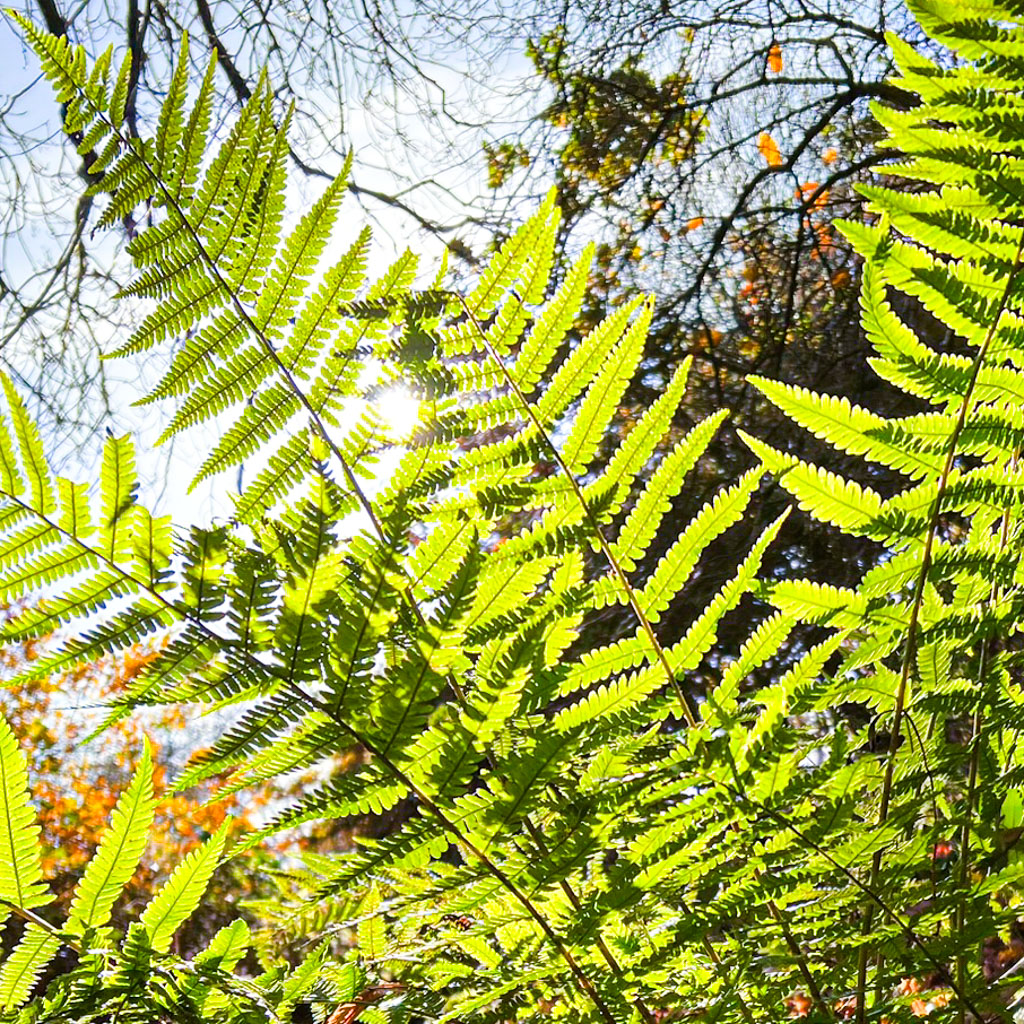My favourite way to see a fern – backlit in low light. It really lights them up well and brings them to life. Their fronds are almost translucent this way and show the shadows of the fronds behind them.
They look quite flat, dull and uninspiring photographed from the opposite direction. They are, however, very interesting plants with a huge range of likes and dislikes so there’s pretty much a fern for every location and habitat.
I’m not an expert on ferns, they can get really tricky to distinguish one from another, but I think this is probably a Scaly Male Fern – likes damp woodland, moorland, hills, lowland, hedges, streams. Ironic then that it’s latin name is Dryopteris affinis. ‘Dryopteris’ actually means ‘a type of fern’ – imaginative naming lads. It tolerates a lot of things – full sun, dry conditions, wet conditions, harsh British winter, exposure, wind – sturdy chap.
The scaly male fern is also an indicator of very old woodland, so if you find one you can be pretty sure that that woods has been around a long time. This does suggest that it doesn’t do so well in new woodland – there just isn’t the biological community and complex soil fauna and flora for it. And this is why although planting new woodland is good, it will take tens, if not hundreds, of years before it’s actually mature enough to support certain species. So, no, planting a new woods does not equal a replacement of an old, established even ancient woodland.

